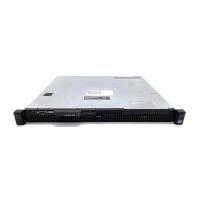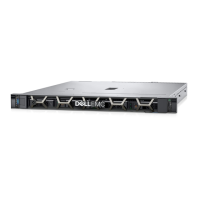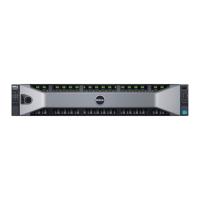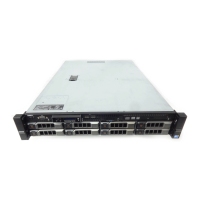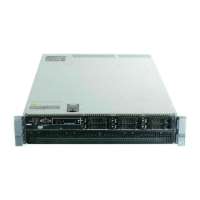Option Description
NOTE: Selecting Only Back Ports On and All Ports O disables the USB management port and also
restricts access to iDRAC features.
Internal USB Port Enables or disables the internal USB port. This option is set to Enabled by default.
Integrated Network
Card 1
Enables or disables the integrated network card.
Embedded NIC1
and NIC2
NOTE: The Embedded NIC1 and NIC2 options are only available on systems that do not have Integrated
Network Card 1.
Enables or disables the Embedded NIC1 and NIC2 options. If set to Disabled, the NIC may still be available for
shared network access by the embedded management controller. The embedded NIC1 and NIC2 options are only
available on systems that do not have Network Daughter Cards (NDCs). The Embedded NIC1 and NIC2 option is
mutually exclusive with the Integrated Network Card 1 option. Congure the Embedded NIC1 and NIC2 option by
using the NIC management utilities of the
system.
I/O Snoop Holdo
Response
Selects the number of cycles PCI I/O can withhold snoop requests from the CPU, to allow time to complete its
own write to LLC. This setting can help improve performance on workloads where throughput and latency are
critical.
Embedded Video
Controller
Enables or disables the Embedded Video Controller option. This option is set to Enabled by default.
Current State of
Embedded Video
Controller
Displays the current state of the embedded video controller. The Current State of Embedded Video Controller
option is a read-only eld. If the Embedded Video Controller is the only display capability in the system (that is, no
add-in graphics card is installed), then the Embedded Video Controller is automatically used as the primary display
even if the Embedded Video Controller setting is set to Disabled.
OS Watchdog
Timer
If your system stops responding, this watchdog timer aids in the recovery of your operating system. When this
option is set to Enabled, the operating system initializes the timer. When this option is set to Disabled (the
default), the timer does not have any eect on the system.
Memory Mapped
I/O above 4 GB
Enables or disables the support for PCIe devices that need large amounts of memory. This option is set to Enabled
by default.
Slot Disablement Enables or disables the available PCIe slots on your system. The slot disablement feature controls the conguration
of PCIe cards installed in the specied slot. Slots must be disabled only when the installed peripheral card prevents
booting into the operating system or causes delays in system startup. If the slot is disabled, both the Option ROM
and UEFI drivers are disabled.
Serial Communication details
The Serial Communication screen details are explained as follows:
Option
Description
Serial
Communication
Selects serial communication devices (Serial Device 1 and Serial Device 2) in BIOS. BIOS console redirection can
also be enabled and the port address can be specied. This option is set to Auto by default.
Serial Port Address Enables you to set the port address for serial devices. This option is set to Serial Device 1=COM2, Serial Device
2=COM1 by default.
NOTE: You can use only Serial Device 2 for the Serial Over LAN (SOL) feature. To use console
redirection by SOL, congure the same port address for console redirection and the serial device.
NOTE: Every time the system boots, the BIOS syncs the serial MUX setting saved in iDRAC. The serial
MUX setting can independently be changed in iDRAC. Loading the BIOS default settings from within the
BIOS setup utility may not always revert the serial MUX setting to the default setting of Serial Device 1.
42 Pre-operating system management applications
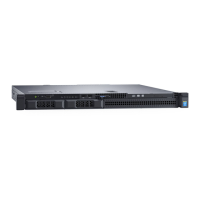
